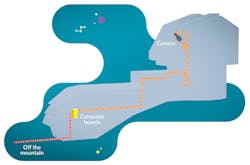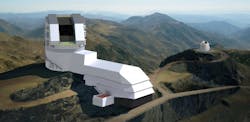When the Vera C. Rubin Observatory atop a mountain Chile starts taking pictures of the night sky next year, its 3,200-megapixel camera will generate an enormous amount of imagery data every night. But then that data has to travel from the mountaintop observatory down to a computer center before it can be sent across the world to cosmologists, astronomers and universities, along with the teams tracking asteroids that might smack into the Earth.
How is that journey accomplished?
It begins with data acquisition (DA) subsystem at the back of the digital telescope’s focal plane, explains Gregg Thayer, the scientist at DoE’s SLAC National Accelerator Laboratory responsible for handling the data. The DA subsystem is comprised of 189 sensors that take the night-sky images, along with several more used to align the camera when taking images.
The sensors, however, are housed in a cryostat, a high-vacuum chamber cooled to about −100°C to minimize noise. There’s no room in the cryostat to contain the 71 circuit boards needed to convert the pixels into optical signals, so they are embedded in the cryostat’s back wall.
The processed optical signals are then fed into about 500 ft. of fiber optic cables. Copper-wire cables would not work because they cannot transmit data fast enough (three gigabit per second, a hundred times as fast as the Internet); it would fade into noise over the 500 ft. Copper cables also could not handle the tight turns and other mechanical constraints without needing cable interconnects which would further lower the signal strength.
Once the signals make it down from the camera, it is fed into 14 computer boards developed at SLAC as part of a secondary DA subsystem. Each board has eight processing modules and 10 gigabit-per-second ethernet switches that convert the optical signals back to electrical ones and connect the boards together.
Three of those boards take data from the camera and prepare it to be sent to two data centers, one in the U.S., one in Europe. Three other boards emulate the camera. This trio lets researchers practice taking data, performing diagnostics and doing other tasks when the camera is unavailable.
The final eight boards serve as backup storage. “There’s a cable that transfers data to the long-haul network to the U.S. and European data facilities,” Thayer says. “If that cable gets cut or breaks, these eight boards can buffer up to three days’ worth of data to let the telescope keep operating during repairs.”

